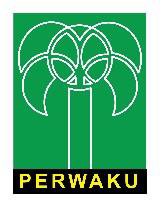Relationship between disaster knowledge and environmental culture with disaster preparedness behaviour
Abstract
This research consists of two independent variables, the disaster knowledge and environmental culture, and a dependent variable of disaster preparedness behaviour. The objective is to determine the relationship between disaster knowledge and environmental culture with disaster preparedness behaviour, as well as the relationship between both of the together with disaster preparedness behaviour. The study was conducted through 166 students of three senior high schools in the District of West Karawang, West Java, which taken by proportional random sampling. The method of survey was employed in this study and the data analyzed by statistical test of correlation and simple linier regression as well as multiple linear correlation and regression, which was conducted at significance level of α = 0.01 and α = 0.05. Based on the results, it was found that there was a positive and significant relationship between disaster knowledge and disaster preparedness behaviour with a correlation coefficient value of ry1 = 0.22 and a coefficient of determination value of (r2) = 0.049. There is a positive and significant relationship between environmental culture and disaster preparedness behaviour with a correlation coefficient value of ry2 = 0.25 and a coefficient of determination value of (r2) = 0.064. There is a positive and significant relationship between disaster knowledge and environmental culture together with disaster preparedness behaviour with a correlation coefficient value of ry12 = 0.32 and a coefficient of determination value of (r2) = 0.097. Thus, it can be concluded that students disaster preparedness behaviour can be improved through either disaster knowledge and environmental culture.
Penelitian ini terdiri atas dua variabel bebas, pengetahuan kebencanaan dan budaya lingkungan, serta satu variabel terikat yaitu perilaku siaga bencana. Tujuannya untuk mengetahui hubungan antara pengetahuan kebencanaan, budaya lingkungan dengan perilaku siaga bencana, serta hubungan keduanya secara bersama-sama dengan perilaku siaga bencana. Penelitian dilaksanakan melalui 166 siswa di tiga sekolah menengah atas, Kecamatan Karawang Barat, yang diambil secara proporsional random sampling. Metode survey digunakan dan data dianalisis dengan uji statistik korelasi dan regresi sederhana serta korelasi dan regresi linear ganda, dilakukan pada taraf signifikansi α = 0,01 dan α = 0,05. Hasil menunjukkan bahwa terdapat hubungan positif dan signifikan antara pengetahuan kebencanaan dengan perilaku siaga bencana dengan nilai koefisien korelasi ry1 = 0,22 dan koefisien determinasi (r2) = 0,049. Terdapat hubungan positif dan signifikan antara budaya lingkungan dengan perilaku siaga bencana dengan nilai koefisien korelasi ry2 = 0,25dan koefisien determinasi (r2) = 0,064. Terdapat hubungan positif dan signifikan antara pengetahuan kebencanaan dan budaya lingkungan secara bersama-sama dengan perilaku siaga bencana, dengan nilai koefisien korelasi ry12 = 0,32 dan koefisien determinasi (r2) = 0,097. Jadi, dapat disimpulkan bahwa perilaku siaga bencana siswa dapat ditingkatkan melalui pengetahuan kebencanaan dan budaya lingkungan.
Keywords
References
Alonso, E.B, Cockx, L., and J. Swinnen (2017). Culture and food security. LICOS Discussion Paper Series No. 398. LICOS Center for Institutions and Economic, Leuven, Belgium.
Bhosale, S.K. (2015). The Concept of ecology and environment. Foundation Course Semester 2, VPMs B.N. Bandodkar College of Science, Thane. http://dspace.vmthane.org [accessed 24 January 2019].
Carter, W.N. (2008). Disaster Management: A Disaster Manager's Handbook. Asian Development Bank, Mandaluyong City, Philippines.
Chang-richards, A., Richards, J., Bubb, J. and M.K. Rañeses (2017). Measuring the level of disaster preparedness in Auckland. Procedia Engineering 212:419-426.
Dodon. (2013). Indikator dan perilaku kesiapsiagaan masyarakat di permukiman padat penduduk dalam antisipasi berbagai fase bencana banjir. Jurnal Perencanaan Wilayah dan Kota 24(2):125-140.
Duval, T.S., and K. Bovalino (2000). Tornado preparedness of students, nonstudents, renters, and nonstudent owners: issue of pre-theory. Journal of Applied Social Psychology 30(6):1310-1329.
Elena, V. (2015). The development of ecological culture of students in the design and creative activity. Procedia-Social and Behavioral Sciences 191:2329-2333.
Hunt, D.P. (2006). The concept of knowledge and how to measure it. Journal of Intellectual Capital 4(1):100-113.
Issa, A.H., Wahab, H.A. and N.A. Abdullah (2017). Depleted uranium violates human right in the environment. International Journal in Management and Social Science 5(3):321-333.
Pebriati and Z. Erly (2013). Pengaruh model pembelajaran terpadu pada pengintegrasian materi pengurangan resiko bencana dalam mata pelajaran IPS SMP terhadap pengetahuan dan kesiapsiagaan bencana. Jurnal Bumi Lestari 1(1):11-20.
Rivai, V. and D. Mulyadi (2010). Kepemimpinan dan Perilaku Organisasi. Raja Gafindo Persada, Jakarta, Indonesia.
DOI: 10.33751/injast.v1i1.1971
 Abstract views : 951
Abstract views : 951
Refbacks
- There are currently no refbacks.
Copyright (c) 2020 Indonesian Journal of Applied Environmental Studies

This work is licensed under a Creative Commons Attribution-NonCommercial-ShareAlike 4.0 International License.













